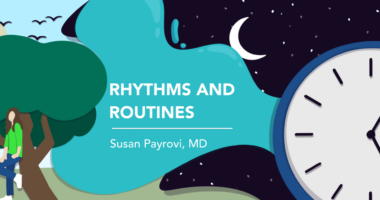Early Use of High-efficacy DMTs Favor Lesser Disability Over Time

Long-term disability outcomes tend to be better in people with relapsing-remitting multiple sclerosis (RRMS) who are treated early on with highly effective therapies, a study based on patient registry data indicates.
The study, “Long-term disability trajectories in relapsing multiple sclerosis patients treated with early intensive or escalation treatment strategies,” was published in Therapeutic Advances in Neurological Disorders.
The MS treatment landscape has changed substantially in the past few decades, with many highly effective medicines being approved. Broadly, these therapies can be divided into moderate-efficacy medications that are comparatively safe, and high-efficacy medicines with more complex safety profiles.
This has posed a conundrum for clinicians: is it better to start patients on safer, lower-efficacy meds, and then move to a more potent medication only if needed — called the escalation strategy or ESC — or is it better to start with high-potency medications right away, called early intensive treatment or EIT?
A team of researchers in Italy analyzed data (collected in November 2019) from a national register covering 2,702 RRMS patients at 62 Italian MS centers. All were new to treatment and within 13 months of disease onset. Early intensive treatment was given to 365 patients, while the remaining 2,337 were placed on an escalation strategy.
Specific medications used in the EIT group were Tysabri (natalizumab), Novantrone (mitoxantrone, generics available), fingolimod (sold as Gilenya, among other brands), and Mavenclad (cladribine). Lemtrada (alemtuzumab) and Ocrevus (ocrelizumab) are also considered high-potency medications, but none of the EIT patients were treated with these medicines.
Patients in the ESC group received a moderate efficacy treatment — such as interferon beta (sold as Avonex, and other brands), glatiramer acetate (sold as Copaxone, generics also available), or azathioprine — for at least one year before escalating to a higher-potency therapy. This transition occurred after a median of 6.3 years.
Researchers used statistical models to compare changes in disability — as assessed with the Expanded Disability Status Scale (EDSS) — in the two groups. The EDSS is a numeric scale from zero to 10 in which higher numbers indicate more severe disability. EDSS assesses disability according to impairment in functional systems, which are brain networks responsible for particular tasks (balance and coordination, bowel and bladder function, vision, etc.).
Of note, the statistical models used accounted for differences between the ESC and EIT groups in terms of factors like initial age and disability.
The change in EDSS (also called delta-EDSS) was significantly smaller among EIT compared with ESC patients at all time points up to 10 years. In other words, those on early intensive treatment tended to have less disability accumulation over time.
The difference between groups also increased as time went on: after one year, the difference in delta-EDSS was 0.1. By five years, it was 0.3; by eight, it was 0.64; and by 10 years, it was 0.67.
To put that into perspective, at treatment initiation, the average EDSS score in both groups was about 2.5 — which indicates either mild disability in one functional system or minimal disability in two functional systems.
By year 10, the average score among the EIT patients was 3.07. A score of 3.0 on the EDSS represents moderate disability in one functional system, or mild disability in three or four functional systems, with no impairment to walking.
At the same time point, the average score for ESC patients was 3.81. A score of 4.0 on the EDSS represents significant disability while still being self-sufficient, and is the lowest EDSS score at which patients experience some difficulty walking.
“The results of our real-world study indicate that the long-term disability trajectories are more favorable with an EIT strategy than with moderate-efficacy DMTs [disease-modifying therapies] followed by escalation to high-efficacy DMTs,” the researchers concluded.
More research in this area is needed, the researchers noted. In particular, they stressed a need for further research into safety risks with the EIT approach, “since the concerns of severe adverse events of the higher-efficacy DMTs are remarkable.”
Nonetheless, “these findings may drive the treatment decisions of physicians, in particular in the cases of naïve patients with poor prognosis factors at the onset of disease,” they concluded.






